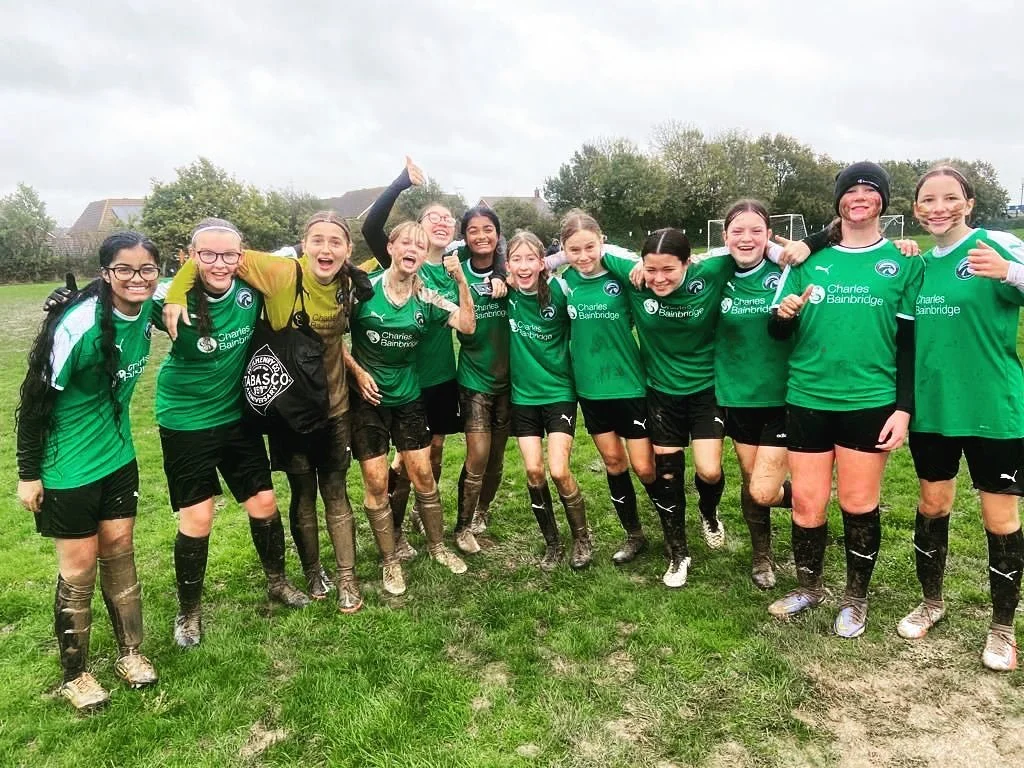New Year, new pitches please!
A few months ago, the English Football Association released their five-year strategy to improve grassroots football in England. I am proud to have played a small role in the development of the strategy, as part of the consultation.
More people than ever – around 15.7 million of them – are now playing grassroots football and a large part of this is the growth of the female game. More than four million women and girls now play regular football in England.
At Canterbury Eagles FC we’re unbelievably proud to have spearheaded the growth of the female game in Canterbury, from zero girls’ teams four years ago, we now have eleven female-only teams ranging from under 9s all the way through to our over 40s walking football team. This means we provide regular training and matches for more than 160 women and girls in Canterbury! We also provide recreational sessions for girls aged five to 11 and for women over 35. As part of this growth we’ve also seen more women and girls get involved in coaching; eight of our team coaches are now fully-qualified, some up to UEFA C level.
Female players who have joined our teams are now inspiring the younger generation by helping out at our girls’ recreational sessions and some have even become qualified referees.
Eighty-six per cent of girls who play football say it has helped them become more confident and I know as a football coach and as a mum of a daughter who played regularly, how important the sport is in developing lifelong friendships, emotional resilience and physical and mental health, especially as girls enter their teens.
But I’m sad to say, we have to turn many children away, as we just don’t have the capacity to take on any more.
The issue with the explosion in the female game, alongside the ever-popular male game is of course, the lack of facilities. There was already pressure on all-weather pitches before those annoying females came onto the scene and now there is even greater demand for accessible facilities that can be used all-year round.
A bit of mud is fun occasionally, but we have a desperate need for all-weather facilities.
I know what some of you are thinking… jumpers for goalposts… can’t you just play in the park etc. But in this day and age we have to be mindful of player safety, as well as making sure that kids have access to good quality training sessions, and that means clubs need good surfaces, plenty of space for children to run around in and floodlights so they don’t bump into each other!
We desperately need more high-quality local facilities for our daughters, granddaughters, nieces, mums, grannies and aunties to play on – to get fit, have fun and make friends.
But there’s more to it than just a kickabout….
Some stats
We often talk about the unique power of football to improve lives and drive positive social change, but The FA provides evidence of the significant value that the grassroots game contributes to the social, health and economic health of our country – which they estimate to be over £15.9 billion, up from £10.2 billion in 2021.
Football is four times more popular in people from the lowest socio-economic backgrounds than any other team sport.
Participation in grassroots football contributes to 519,000 cases of preventions of disease and consequently a £3.2 billion saving to the NHS.
Grassroots football delivers more than 360 million social interaction hours enjoyed by England’s children each year, equating to £908 million GDP growth through improved educational attainment.
Over a million people work and volunteer in grassroots football, contributing almost £6 billion to society each year.
There are 18,000 registered clubs across the country, supporting 120,000 teams and more than 1.3 million players.
In the immortal words of Ron Manager, football. Isn’t it? Marvellous.

